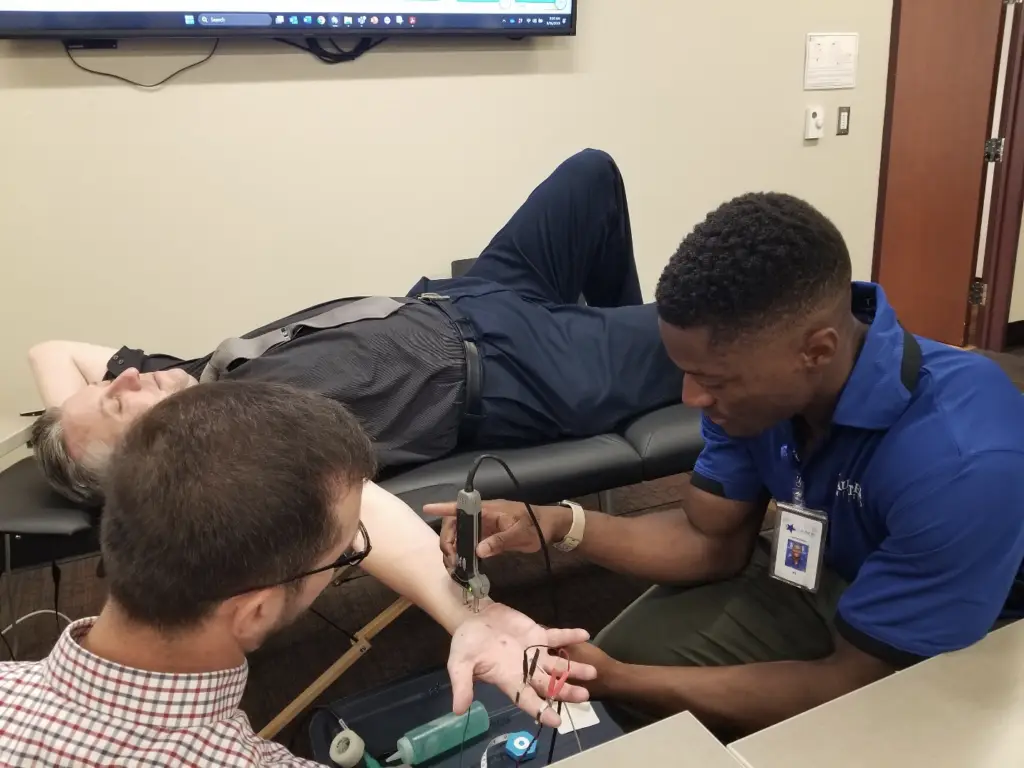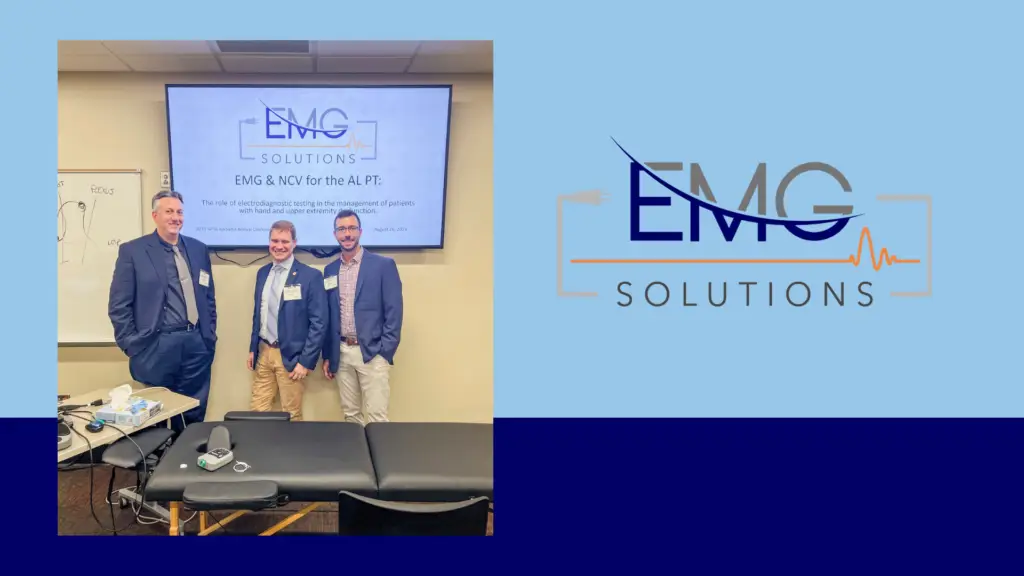The Alabama APTA was recently held at the Samford University Campus in Birmingham, Alabama. Those
present witnessed an engaging and insightful presentation that shed light on the niche practice area of
electrodiagnostic (EDX) testing within the realm of physical therapy practice. With a growing interest in
advanced technologies and specialized techniques, this presentation offered attendees a profound
insight into the application of nerve conduction studies (NCS) and electromyography (EMG) in the
clinical setting.
John Lugo, PT, DPT, ECS, kicked off the morning’s session by highlighting the significance of
electrodiagnostic testing in managing patients with hand and upper extremity dysfunction. Using case
studies, he educated the attendees on the diagnostic potential of NCS, explaining how it can be helpful
in differentiating between various conditions like carpal tunnel syndrome, diabetic-induced peripheral
neuropathy, brachial plexopathies, and cervical radiculopathies. Utilizing the information obtained
through nerve conduction studies, physicians and physical therapists can more accurately determine the
appropriate treatment plan needed to maximize functional outcomes for patients.
Clinical electromyographer Austin Andrus, PT, DPT, ECS, and current electromyography resident,
Drayton Perkins, PT, DPT, facilitated a hands-on learning experience for the participants. The small
group sizes afforded each person present with the opportunity to perform nerve conduction studies of
commonly tested nerves in the upper extremity (e.g., median sensory and motor nerves, the ulnar
sensory and motor nerves, and the superficial radial sensory nerve). Participants were able to fully
appreciate the intricacies of NCS testing as they administered electrical stimuli to assess the nerve’s
conduction velocity, distal latencies, sensory nerve action potential (SNAP) amplitudes and/or combined
muscle action potentials (CMAP) amplitudes, and waveform morphology. This practical exposure left
everyone feeling empowered that they, too, could pursue a career in electrodiagnostic testing as a part
of their physical therapy career.
Following the NCS lab experience, John delved into the foundations of electromyography (EMG),
detailing the five crucial outcomes obtained from EMG testing, which include identifying the presence of
nerve or muscle damage, identifying which nerve(s) or muscle(s) are damaged, characterizing of type of
lesion(s) present, pinpointing the area of insult to the nerve/muscle, and assessing the stage of tissue
inflammation. Understanding these outcomes improved the attendees’ grasp of the diagnostic
applications of EDX testing in physical therapy. During the discussion, case studies were explored to
underscore the multifaceted potential outcomes of EDX testing, particularly its capacity to differentially
diagnose conditions, provide insight into patient prognosis, and to guide physical therapists towards
interventions that are most appropriate given the extent of the injury and the natural healing time
necessary for recovery.

Once again, under the guidance of the trained presenters, the attendees were provided with the unique opportunity to perform EMG testing on commonly assessed upper extremity muscles. With one-on-one guidance, they learned about proper electrode placement, proper needle-handling techniques, and
were able to observe and record the electrical signals generated during muscle testing.
This practical exposure not only deepened their understanding of EMG but also instilled confidence in their ability to perform such diagnostic procedures. Overall, the conference session enriched their learning experience and allowed them to bridge the gap between theory and practical application.
The session concluded with a comprehensive perspective on the synergy between NCS and EMG testing, which collectively assesses peripheral nerve health, muscle function, and neuromuscular junction health. Clinical electromyography is no longer just a niche practice; it is an exciting opportunity for physical therapists to enhance their diagnostic testing skills for the benefit of their patients. Attendees left with a renewed sense of excitement and curiosity, not only about the possibilities that
electrodiagnostic testing has to offer, but also with the confidence that they, too, are capable of
performing nerve conduction studies and electromyography testing.



